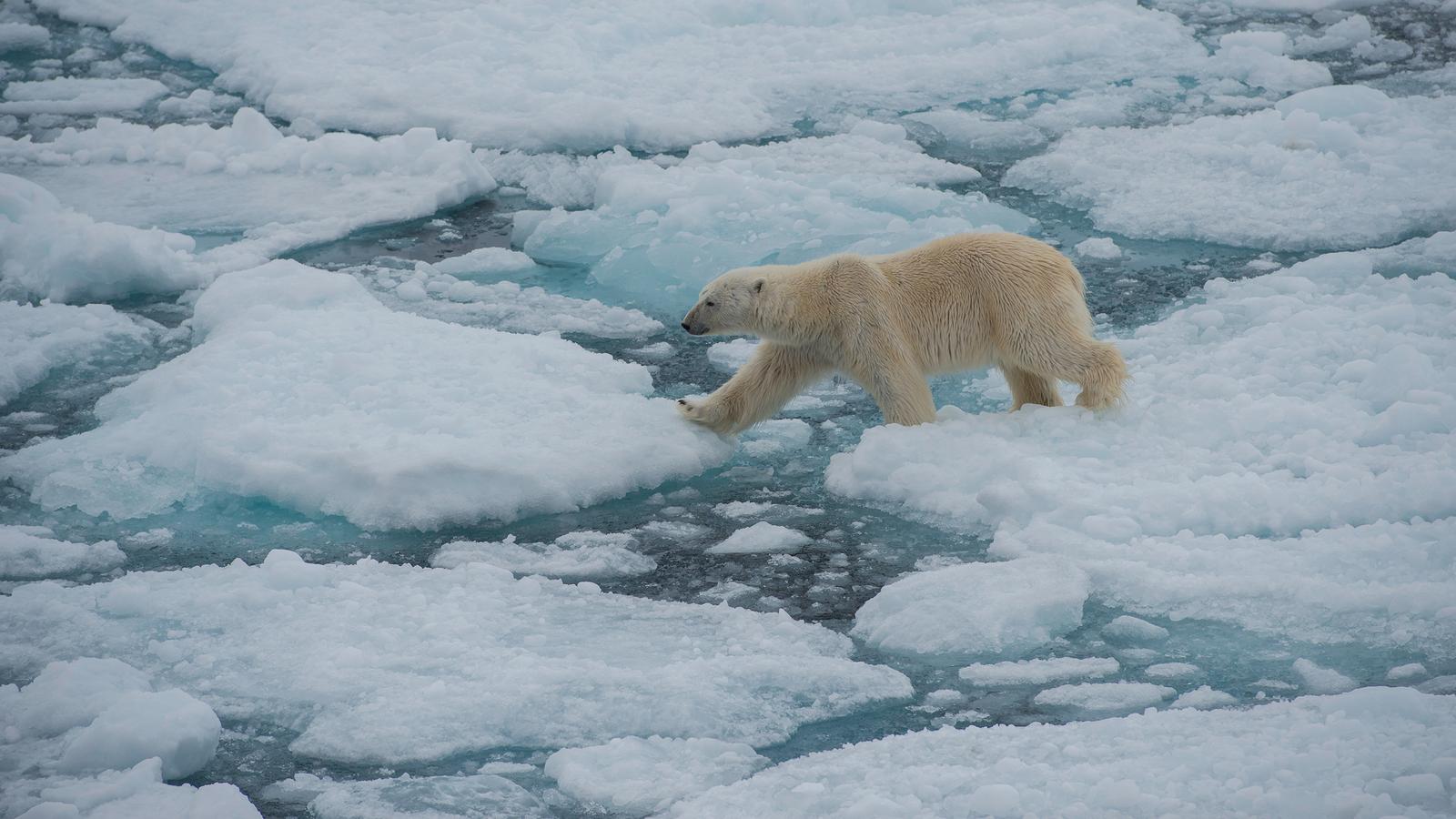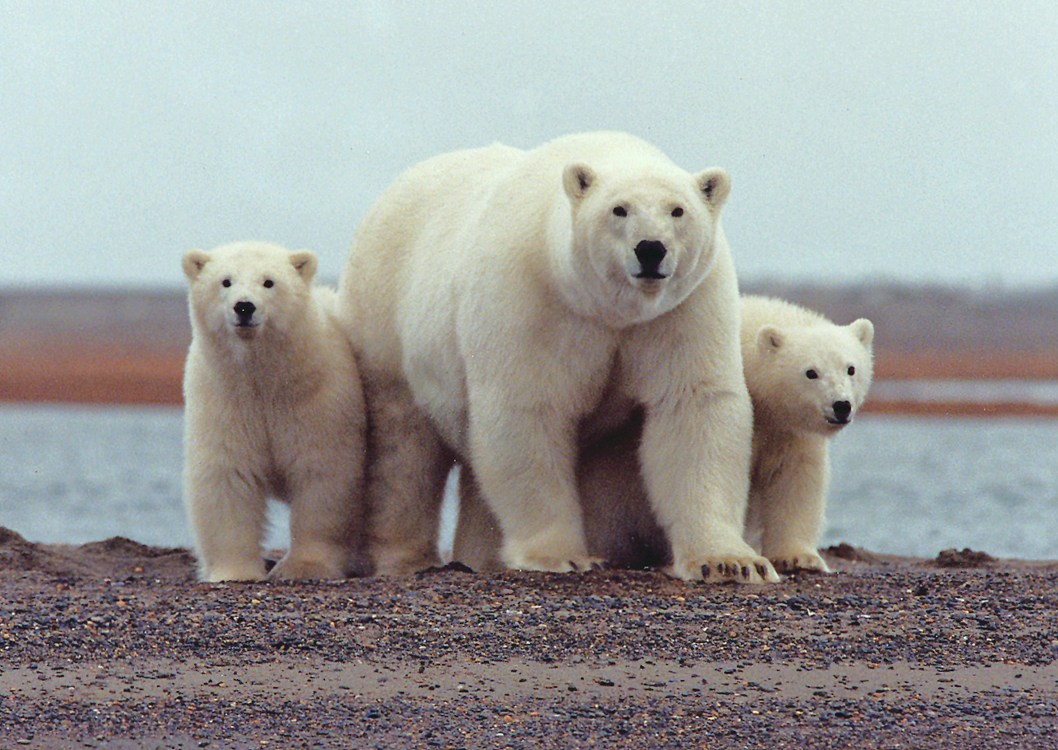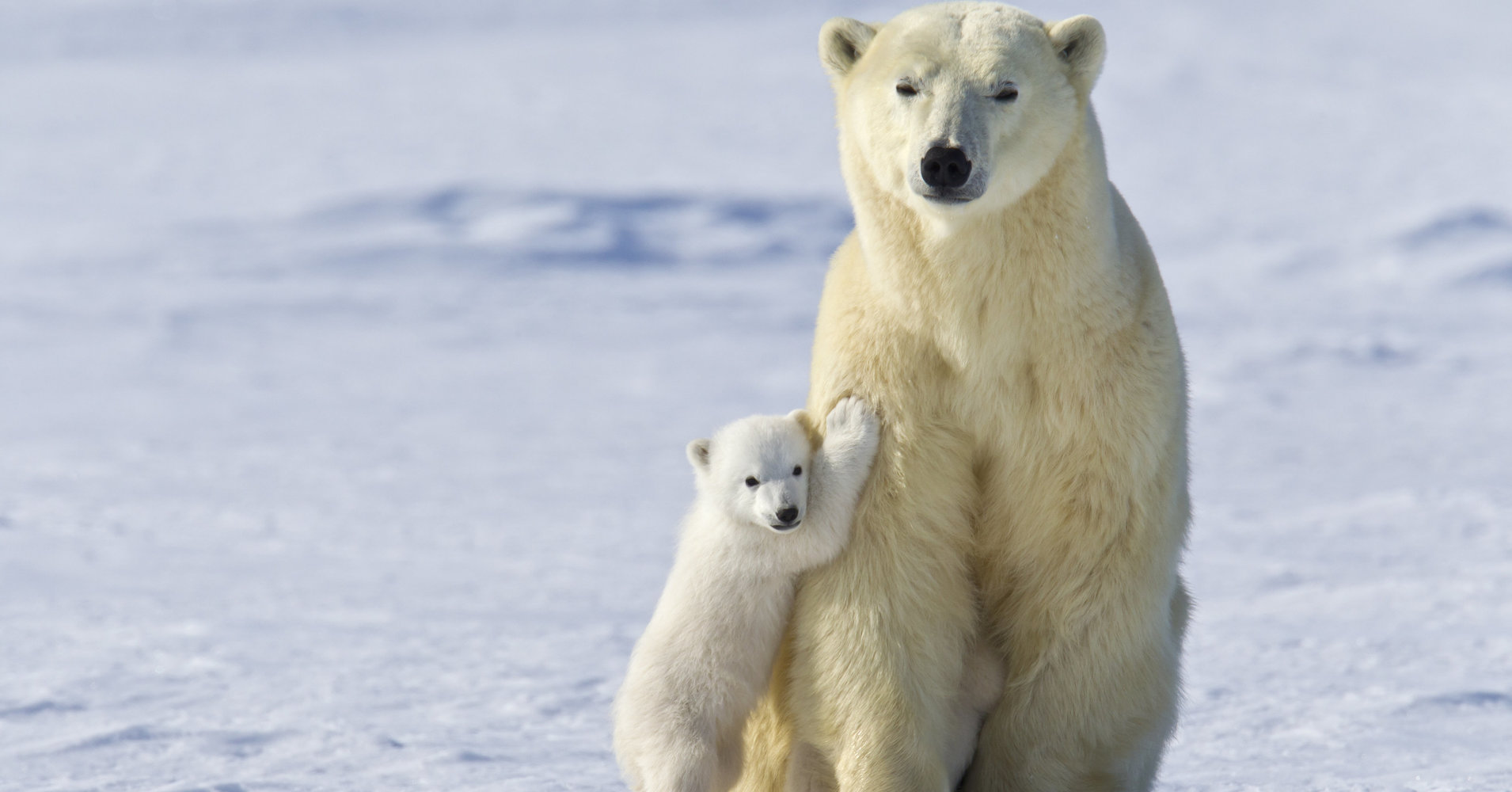THE POLAR BEAR
Background
Polar bears are classified as marine mammals because they spend most of their lives on the sea ice of the Arctic Ocean. They have a thick layer of body fat and a water-repellant coat that insulates them from the cold air and water. Considered talented swimmers, they can sustain a pace of six miles per hour by paddling with their front paws and holding their hind legs flat like a rudder.

Polar bears spend over 50% of their time hunting for food. A polar bear might catch only one or two out of ten seals it hunts, depending on the time of year and other variables. Their diet mainly consists of ringed and bearded seals because they need large amounts of fat to survive.
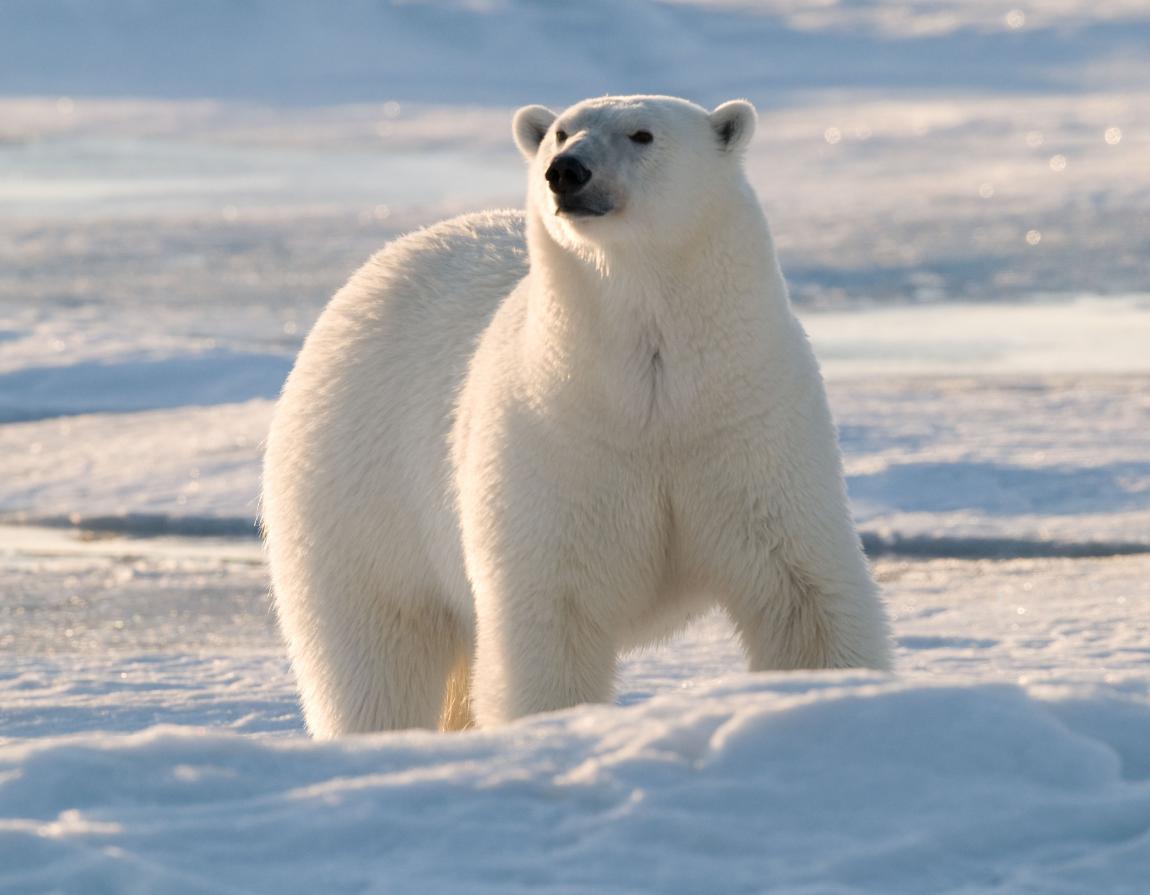
Population
Scientists have divided the total polar bear population into 19 units or subpopulations. Of those, the latest data from the IUCN Polar Bear Specialist Group show that one subpopulation is in decline (Southern Beaufort Sea) and that there is a high estimated risk of future decline due to climate change and data deficiency.
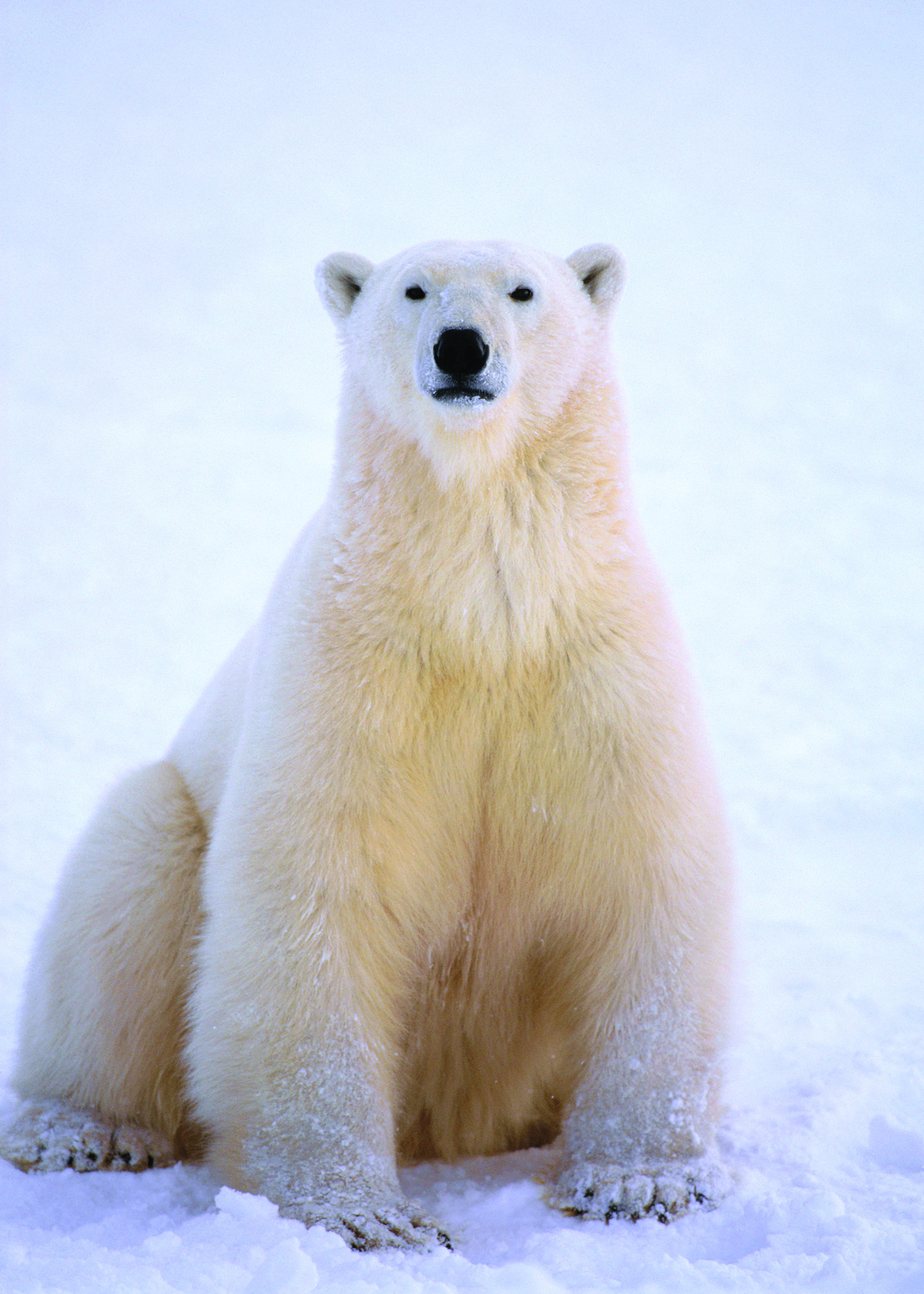
Because of ongoing and potential loss of their sea ice habitat resulting from climate change, polar bears were listed as a threatened species in the US under the Endangered Species Act in May 2008.
Endangered
Polar bears depend on sea ice as a platform from which to hunt seals, rest and breed. The summer sea ice has been decreasing in size for decades and melting for longer periods of time. Bears must move longer distances to stay with the rapidly receding ice.

Climate change is also resulting in more habitat fragmentation. As Arctic ice melts, polar bears are affected by increased shipping activities and a rise in opportunities for oil and gas development

As climate change forces polar bears to spend longer time onshore, they come in contact more often with Arctic communities. Unfortunately, these interactions sometimes end badly for humans and bears. In Russia and Alaska, WWF addresses this challenge by supporting local efforts to protect people and polar bears.
Scientists believe that a natural safety net of ice in the High Arctic of Canada and Greenland covering 320 million acres—or twice the size of Texas—may persist longer than the ice anywhere else. Since 1992, WWF has been working with partners to sustainably preserve the rich biodiversity of this region.

